Dubai, All you Need to Know
Dubai (/duːˈbaɪ/, doo-BY; Arabic: دبي, romanized: Dubayy, IPA: [dʊˈbajj], Gulf Arabic pronunciation: [dəˈbaj]) -
The Vibrant City of the United Arab Emirates Dubai, derived from the Arabic word "Dubayy," is a bustling metropolis in the United Arab Emirates (UAE) and serves as the capital of the Emirate of Dubai, the most populous among the nation's seven emirates. Initially a modest fishing village in the 19th century, Dubai swiftly evolved into a pivotal regional trade center during the early 20th century, experiencing remarkable growth in the late 20th and early 21st centuries, particularly in the tourism and luxury sectors. The city boasts the world's tallest building, the Burj Khalifa, standing at an impressive height of 828 meters (2,717 feet), and ranks second globally in the number of five-star hotels. Situated on the eastern Arabian Peninsula along the Persian Gulf coast, Dubai has emerged as a crucial global transport hub for both passengers and cargo, buoyed by oil revenues that catalyzed its development as a major commercial hub. Over the years, Dubai has solidified its position as a prominent center for regional and international trade, relying on diverse sectors such as trade, tourism, aviation, real estate, and financial services for its economic sustenance. Notably, oil production contributes less than 1 percent to the emirate's GDP, highlighting its diversified economic landscape.
The Origins of "Dubai" Various theories surround the etymology of "Dubai." One theory proposes that it originated from the word "souq" in Ba, while an Arabic proverb links it to "Daba Dubai," signifying a place associated with wealth. Scholar Fedel Handhal suggests a connection to "dabba," meaning "to creep," possibly referring to Dubai Creek's slow flow. Another interpretation ties it to "baby locust," reflecting the area's past abundance of locusts. The Modernization Journey Dubai's history traces back to its establishment as a fishing village in the early 18th century. By 1822, it had evolved into a town under the rule of Sheikh Tahnun bin Shakhbut of Abu Dhabi. In 1833, members of the Al Bu Falasah tribe migrated to Dubai, laying the foundation for the Maktoum dynasty. Dubai's engagement with the British government, marked by treaties and agreements, including the General Maritime Treaty of 1820, contributed to its maritime and trade prominence. The 20th century witnessed significant developments, from a smallpox epidemic and fires to the establishment of Dubai as a free port by Maktoum bin Hasher Al Maktoum in 1901. This move, coupled with strategic policies and infrastructure initiatives, fueled Dubai's emergence as a thriving port and trading center. Challenges such as the "great storm" of 1908 and conflicts like the Hyacinth incident in 1910 shaped Dubai's resilience and determination to progress.
Pre-Oil Era and Infrastructure
Pre-Oil Era and Infrastructure Growth Dubai's strategic location facilitated trade, attracting foreign traders, especially from Iran, who settled in the town. However, the decline of the pearl trade due to the Great Depression in the 1930s led to economic hardship. Despite signing oil exploration contracts in 1937, World War II delayed oil production until 1966. Under the visionary leadership of Sheikh Rashid bin Saeed Al Maktoum from 1958, Dubai leveraged its trading revenues to develop vital infrastructure. Investments in telecommunications, electricity, water supply, and transportation, including the construction of Dubai's first airport and bridges, laid the groundwork for modernization. The city's strategic initiatives, coupled with its growing importance as an aviation and trade hub, set the stage for Dubai's remarkable transformation into a global metropolis.
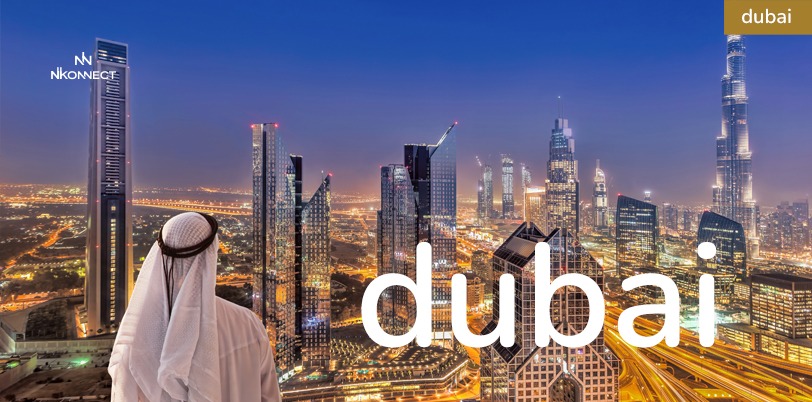

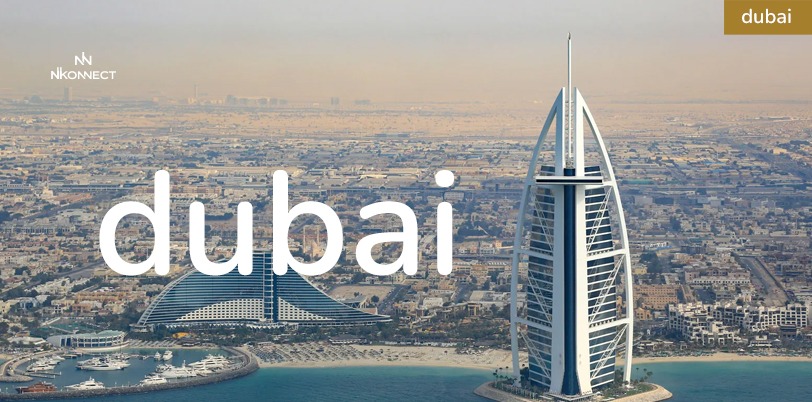

Dubai - The Oil Era
The exploration for oil around Dubai, spurred by significant discoveries in neighboring Abu Dhabi, bore fruit in 1966 with the discovery of oil in its territorial waters, albeit in smaller quantities. The first oil field, named "Fateh" or "good fortune," heralded an era of accelerated infrastructure development under Sheikh Rashid's leadership. This period saw a construction boom attracting a massive influx of foreign workers, predominantly Asians and Middle Easterners, leading to a remarkable population surge of over 300% between 1968 and 1975. The Infrastructure Boom To facilitate oil pumping and transportation from the Fateh field off the Jebel Ali area, Dubai constructed two massive 500,000-gallon storage tanks known as "Kazzans" by welding them on the beach, then floating them onto the seabed at the Fateh field. This innovative solution, crafted by the Chicago Bridge & Iron Company, streamlined offshore operations, allowing supertankers to dock even in adverse weather conditions without the need for onshore oil piping from the distant Fateh field, located some 60 miles offshore.
The Rise of Oil Revenue The influx of oil revenue from 1969 onwards fueled a period of unprecedented growth, empowering Sheikh Rashid's strategy of diversified economic development and infrastructure building. Despite oil contributing 24% to GDP in 1990, this figure dwindled to 7% by 2004, signaling Dubai's successful pivot towards a more diversified economy. Key Infrastructure Projects Notably, Sheikh Rashid's early initiatives included the construction of Port Rashid, a deep-water free port built by the British company Halcrow. Originally designed as a four-berth port, it expanded to sixteen berths due to its immediate success, attracting shipping queues eager to access its modern facilities. This strategic move paved the way for Dubai's status as a major trading hub, complemented by investments in roads, bridges, schools, and hospitals, laying the groundwork for the city's modern infrastructure. Towards Union and Modernization The trajectory of Dubai's growth continued as it navigated political shifts, including the withdrawal of British troops in 1968, leading to negotiations that culminated in the formation of the United Arab Emirates (UAE) in 1971.
Dubai's steady growth persisted through the 1970s, fueled by oil revenues and a thriving trade environment, marked by milestones like the adoption of the UAE dirham as a uniform currency in 1973. The Gulf War posed challenges but also opportunities, propelling Dubai's focus on free trade and tourism. Geographical Context Dubai's geography, nestled on the Persian Gulf coast, comprises a blend of sandy deserts, coastal plains, and the Western Hajar Mountains. The city's natural assets, including Dubai Creek and diverse wildlife, contribute to its appeal as a global destination while strategic initiatives and economic diversification continue to shape its modern identity.
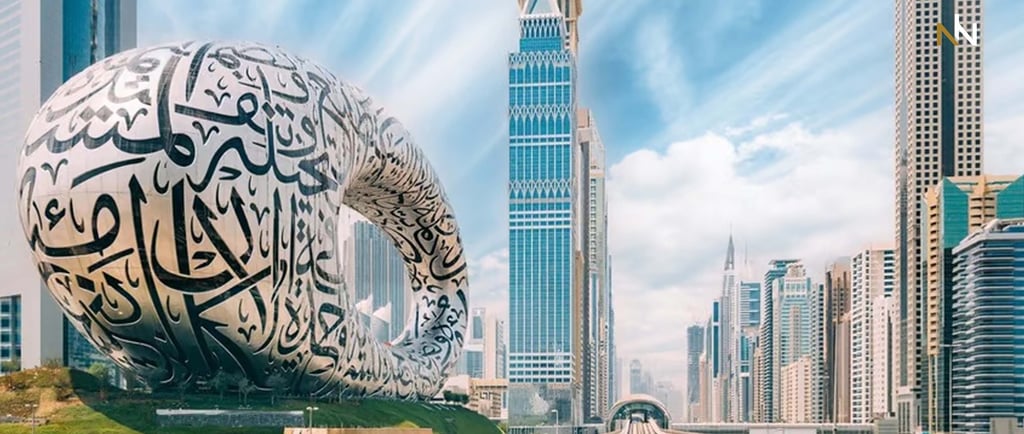

Climate
Dubai enjoys a tropical hot desert climate (Köppen BWh), characterized by scorching summers with prolonged periods of intense heat, strong winds, and high humidity levels. In August, the peak of summer, daytime temperatures soar to around 40 °C (104 °F), while nighttime temperatures remain at approximately 30 °C (86 °F). The city experiences predominantly sunny days throughout the year. Winters are generally mild to warm, with average highs of 24 °C (75 °F) and lows of 14 °C (57 °F) in January, which is considered the coolest month.
Dubai's climate offers diverse experiences, from warm winters ideal for outdoor activities to hot summers perfect for beachgoers. Despite its arid nature, Dubai has witnessed an increase in precipitation over recent decades, enhancing the greenery and natural landscapes of the city. The average annual rainfall is 79.2 mm (3.12 in), but this figure has risen to 110.7 mm (4.36 in) per year due to changing weather patterns, contributing positively to the overall environment.
Government
Dubai has been under the esteemed rule of the Al Maktoum family since 1833, functioning as an absolute monarchy. Citizens actively participate in the electoral college to select representatives to the Federal National Council of the UAE. His Highness Sheikh Mohammed bin Rashid Al Maktoum serves as the revered ruler, vice-president, Prime Minister of the UAE, and member of the Supreme Council of the Union (SCU). Dubai appoints 8 esteemed members to the Federal National Council (FNC) of the UAE, the supreme federal legislative body.
The Dubai Municipality (DM) was established in 1954 by then-ruler Rashid bin Saeed Al Maktoum for city planning and citizen services. It has evolved into the esteemed Government of Dubai, overseeing city and emirate affairs through over 58 efficient governmental departments. Dubai proudly boasts a separate judicial system from the federal judiciary of the UAE, with executive authority delegated to the Dubai Executive Council since 2003, led by Crown Prince Hamdan bin Mohammed Al Maktoum. The traditional open majlis (council) serves as an inclusive platform for citizen feedback on domestic issues, highlighting Dubai's commitment to inclusive governance.
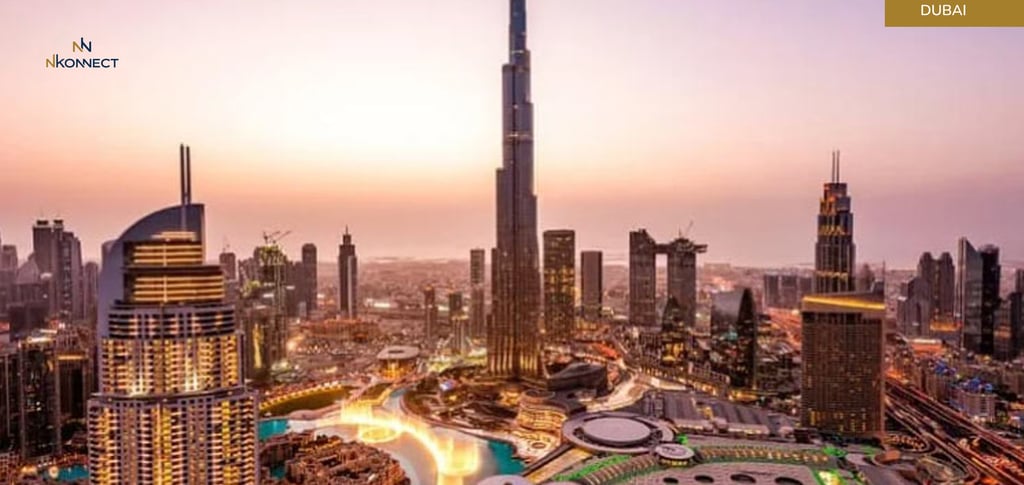

Ethnicity and Multilingualism
Dubai's population as of September 2019 stood at 3,331,420, with an annual increase of 177,020 people, reflecting a growth rate of 5.64%. The region covers 1,287.5 square kilometers (497.1 sq mi), with a population density exceeding eight times that of the entire country. Known as the second most expensive city in the region and the 20th most expensive globally, Dubai is a diverse melting pot.
In 2013, approximately 15% of Dubai's population consisted of UAE nationals, while the majority were expatriates, many of whom have been in the country for generations or were born there. Of the expatriate population, 85% were Asian, primarily Indian (51%) and Pakistani (16%), with significant representation from Bangladeshis (9%) and Filipinos (3%). A quarter of the population traced their origins to Iran. Additionally, 16% of the population living in collective labor accommodations were predominantly Asian, totaling 288,000 individuals. Westerners comprised 5.1% of the population, with over 100,000 British expatriates making up the largest Western group in Dubai.
The median age in the emirate was approximately 27 years, with an estimated birth rate of 15.54 per 1,000 people in 2014. Apart from Arabs, including GCC nationals, Dubai has a vibrant multicultural community.
Arabic serves as the national and official language of the United Arab Emirates, with the Gulf dialect spoken natively by Emirati people. English is widely used as a second language. Due to immigration, Dubai also boasts a rich linguistic landscape, with languages like Malayalam, Hindi-Urdu (or Hindustani), Gujarati, Persian, Sindhi, Tamil, Punjabi, Pashto, Bengali, Balochi, Tulu, Kannada, Sinhala, Marathi, Telugu, Tagalog, and Chinese being spoken, among many others.
Religion
Islam is declared the official state religion of the UAE under Article 7 of the Provisional Constitution. The government subsidizes nearly 95% of mosques and employs all Imams. Dubai's mosques are managed by the Islamic Affairs and Charitable Activities Department, also known as "Awqaf," under the Government of Dubai.
Dubai is home to a diverse religious community, including Christians, Hindus, Sikhs, Baháʼís, Buddhists, and a small but growing Jewish community. In 2014, Muslims constituted over 56% of the population, followed by Christians (25%), Hindus (16%), and adherents of other religions (2%).
Non-Muslim groups can own their places of worship by requesting a land grant and permission to build a compound. They are also allowed to use the facilities of other religious organizations or worship in private homes. Dubai has been noted for its tolerance towards Christians and other religious groups, with various denominations having their churches and temples in the city.
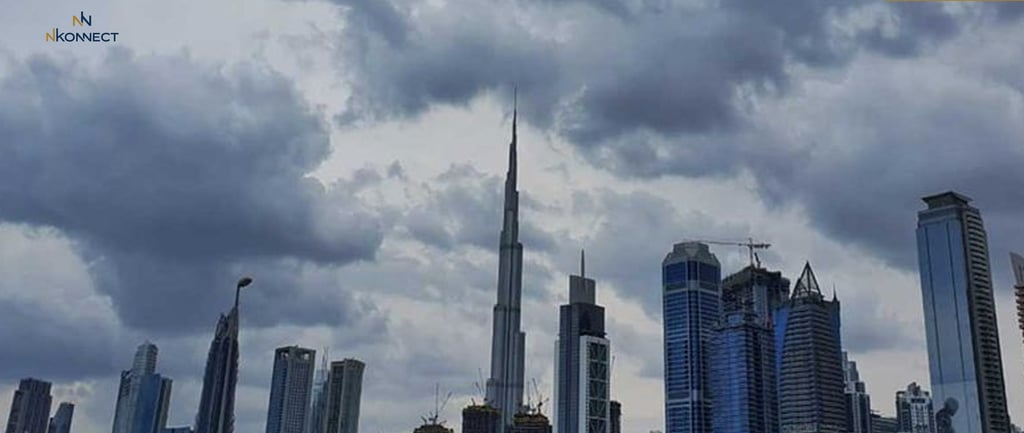

Economic Landscape
Dubai's economy is recognized as one of the world's fastest-growing, with a projected gross domestic product (GDP) exceeding US$177 billion in 2021 and a growth rate of 6.1% in 2014. While historically linked to the oil industry, oil and natural gas revenues contribute less than 5% to the emirate's income. The decline in oil reserves underscores Dubai's diversified economic structure, driven by sectors like real estate and construction (22.6%), trade (16%), entrepôt activities (15%), and financial services (11%).
Non-oil foreign trade plays a pivotal role, reaching $362 billion in 2014. Imports dominate this trade at $230 billion, while exports and re-exports account for $31 billion and $101 billion, respectively. China emerged as Dubai's largest international trading partner in 2014, with a total trade of $47.7 billion, followed by India at $29.7 billion and the United States at $22.62 billion.
Dubai's strategic location and historical significance as a trade hub have shaped its modern economic landscape. The city's free trade policies, exemplified by the gold trade, have attracted global attention. Additionally, Dubai's Jebel Ali port, boasting the world's largest human-made harbor, facilitates substantial container traffic, ranking seventh globally.
Service industries like information technology and finance thrive in Dubai, supported by industry-specific free zones such as Dubai Internet City and Dubai Media City. These zones host renowned multinational companies, contributing significantly to Dubai's economic dynamism.
The Dubai Financial Market (DFM), established in 2000, and NASDAQ Dubai serve as vital platforms for securities trading, bolstering the emirate's financial prowess. Furthermore, DMCC, recognized as the world's fastest-growing free zone, has played a crucial role in attracting global investment.
Dubai's moniker as the "City of Gold" reflects its significant gold trading volumes, contributing substantially to the economy. International accolades, like ranking 27th richest city globally in terms of purchasing power parity (PPP) and being a top financial center in the Middle East, underscore Dubai's economic prominence.
Strategic initiatives like Dubai Fashion 2020 and Dubai Design District demonstrate the emirate's commitment to fostering diverse economic sectors and attracting international talent, ensuring sustained economic growth and competitiveness.
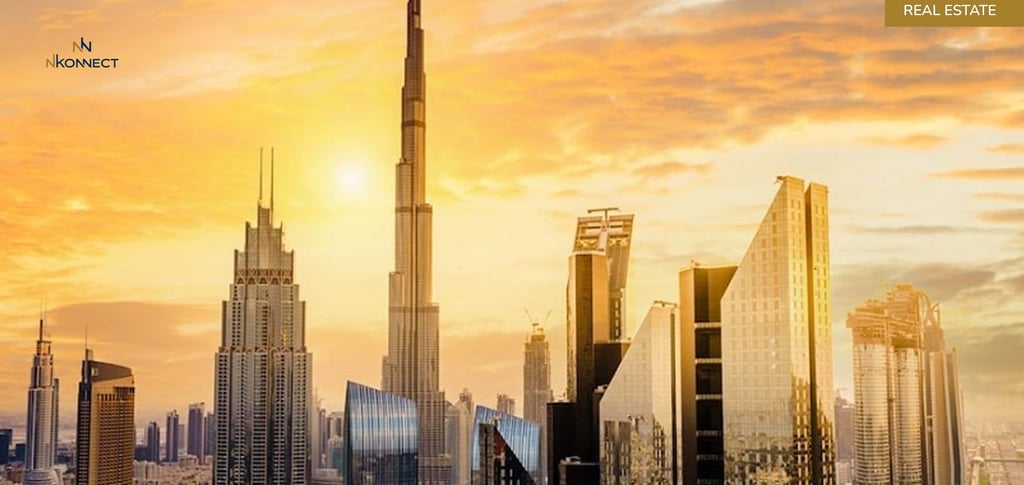

Real Estate Landscape
Dubai's ruler Sheikh Mohammed bin Rashid Al Maktoum ordered the establishment of the Higher Committee for Real Estate Planning in September 2019 to study and evaluate future real estate construction projects, reflecting a proactive approach to maintaining a balanced real estate market. This move is aimed at ensuring a sustainable pace of development and aligning supply with demand.
Dubai's transition from a trade-based, oil-reliant economy to a service- and tourism-oriented one has significantly increased the value of properties, leading to appreciation between 2004 and 2006. This period also witnessed the construction of iconic landmarks such as the Emirates Towers, Burj Khalifa, Palm Islands, and the renowned Burj Al Arab hotel.
While the property market experienced a downturn in 2008 and 2009 due to global economic challenges, Dubai's resilience and strategic planning have contributed to its recovery. The city's real estate sector continues to attract genuine investors and residents, showcasing confidence in Dubai's long-term growth prospects.
In terms of tourism, Dubai is a thriving destination known for its vibrant shopping experiences and rich array of attractions. It ranks as the world's fourth most-visited city, experiencing rapid growth and aiming for 20 million tourists by 2020. The city's diverse tourism offerings, from modern marvels like the Burj Khalifa to historical souks along Dubai Creek, cater to a wide range of visitors.
Dubai's reputation as the "shopping capital of the Middle East" is reinforced by over 70 shopping centers, including the globally renowned Dubai Mall. The city's traditional souks, like the Gold Souk in Deira, add cultural charm to its tourism landscape. Additionally, Dubai's parks, beaches, and recreational facilities offer unique experiences for tourists, contributing to its appeal as a top global destination.
Tourism and Retail Scene
Dubai's tourism sector continues to thrive, with Mastercard's Global Destination Cities Index 2019 highlighting higher tourist expenditures in the city compared to other destinations. This underscores Dubai's position as a premier destination for international travelers seeking diverse experiences and world-class hospitality.
The city's beaches, including Umm Suqeim Beach, Al Mamzar Beach Park, and Kite Beach, among others, are major draws for tourists. Dubai's appeal is further evidenced by tourist spending, with Mastercard's Global Destination Cities Index 2019 indicating higher expenditures in Dubai compared to other destinations, averaging $553 per day.
Dubai Creek Park, a prominent tourism hub, showcases various attractions such as the Dolphinarium, Cable Car, Camel Ride, Horse Carriage, and Exotic Birds Shows. Moreover, Dubai's diverse range of parks like Safa Park, Mushrif Park, and Hamriya Park offer unique experiences, with Mushrif Park featuring distinct houses from around the world.
The city's tourism scene is complemented by its robust retail landscape, with over 70 shopping centers, including the globally acclaimed Dubai Mall, the second largest in the world. Dubai's historical souk districts, nestled along Dubai Creek, add to its allure. These traditional marketplaces, frequented by dhows from Asia, China, and India, have historically been pivotal in Dubai's economic prosperity. The Gold Souk in Deira, home to nearly 250 gold retail shops, further enhances Dubai's reputation as "the City of Gold."
In conclusion, Dubai's tourism and retail sectors continue to thrive, showcasing the city's diverse offerings, rich cultural heritage, and commitment to providing exceptional experiences for visitors from around the globe.
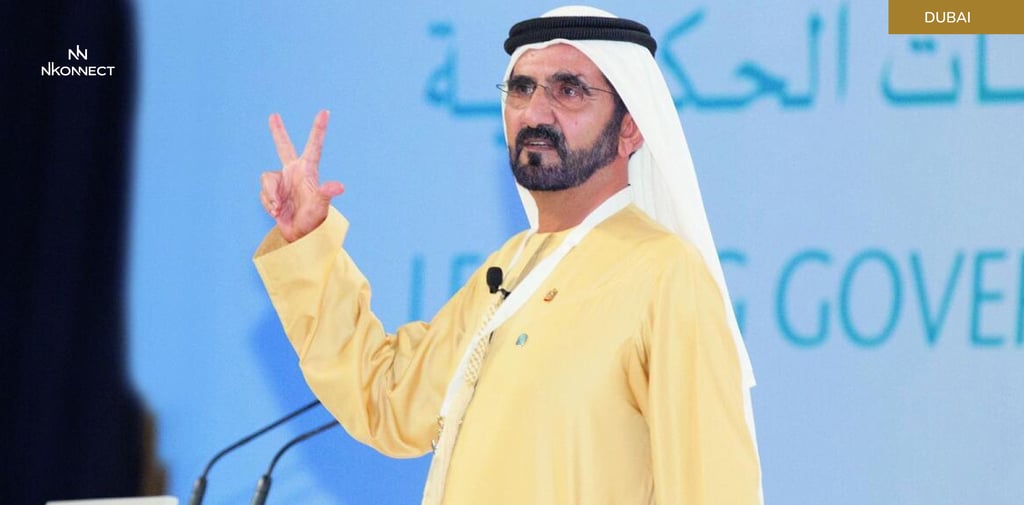

Expo 2020
Dubai's bid for Expo 2020 was marked by impressive infrastructure and national support levels, leading to its successful win to host the event. The Expo 2020 site was strategically planned across a vast area within Dubai Trade Centre Jebel Ali, offering various social and economic benefits, including the launch of the world's largest solar power project.
Originally scheduled for 2020, the Expo was postponed to 2021 due to the COVID-19 impact but continued to showcase 192 country pavilions and thematic districts highlighting diverse experiences.
Dubai's commitment to inclusivity and accessibility was demonstrated through initiatives like Expo City Dubai, promoting wheelchair-friendly infrastructure and tactile indicators for the visually impaired.
Architecture
Dubai boasts a diverse collection of buildings and structures showcasing various architectural styles. The city has become a hub for innovative architectural designs, especially in Islamic architecture, supported by top firms from around the world such as Al Hashemi, Aedas, and renowned firms from New York and Chicago. This architectural boom has propelled Dubai to new heights in skyscraper design and technology, with numerous completed or topped-out skyscrapers exceeding 2⁄3 km (2,200 ft), 1⁄3 km (1,100 ft), or 1⁄4 km (820 ft), surpassing any other city globally. A significant milestone was achieved with the completion of the Burj Khalifa (Khalifa Tower), standing as the world's tallest building at 829.8 m (2,722 ft). The design of the Burj Khalifa draws inspiration from Islamic patterning systems, with its triple-lobed footprint resembling the desert flower hymenocallis native to Dubai.
Following a construction boom that started in the 1980s and accelerated in the 1990s and 2000s, Dubai attained the world's tallest skyline status by January 4, 2010, with the completion of the Burj Khalifa. The tower's observation deck, offering breathtaking views, ranks as one of Dubai's top tourist attractions.
Plans for the Creek Tower aimed to maintain Dubai's position atop the tallest buildings list; however, construction was indefinitely halted during the coronavirus pandemic, and no resumption date has been announced.
Burj Al Arab
The Burj Al Arab, often described as "the world's only 7-star" hotel (though officially termed as a "five-star deluxe property"), gained global fame for its luxury and iconic sail-shaped design. Despite the hotel management never officially endorsing the "7-star" label, it remains a widely recognized symbol of Dubai's opulence.
Burj Khalifa
Formerly known as Burj Dubai, the Burj Khalifa stands as the world's tallest building, soaring to 828 meters (2,717 ft). Its construction involved a collaboration of over 30 contracting companies worldwide, showcasing architectural brilliance and engineering excellence. Named after Sheikh Khalifa bin Zayed Al Nahyan, the tower is a symbol of Dubai's modernity and ambition.
Palm Jumeirah
Constructed as an artificial archipelago, Palm Jumeirah is a remarkable feat of engineering, adding a unique touch to Dubai's coastline. Developed by Nakheel and designed by Helman Hurley Charvat Peacock/Architects, Inc., it is part of the larger Palm Islands project and serves as an iconic waterfront community.
The World Islands
The World Islands is an ambitious project creating a group of artificial islands shaped like a world map. Situated in the Persian Gulf, this development showcases Dubai's capability to transform its coastal landscape into breathtaking and innovative urban spaces.
Dubai Miracle Garden
Dubai Miracle Garden stands as the world's largest flower garden, captivating visitors with its vast array of colorful blooms. It incorporates sustainable practices like using recycled wastewater for irrigation, making it an environmentally conscious attraction.
Dubai Marina
Dubai Marina is an impressive artificial canal city, offering a vibrant waterfront lifestyle. With residential towers, villas, and a bustling community, it adds a dynamic dimension to Dubai's urban landscape, drawing inspiration from global waterfront developments like Concord Pacific Place in Vancouver.

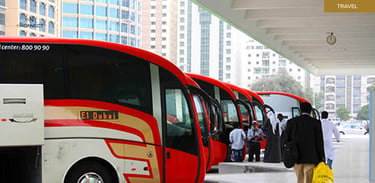
Transportation
Transportation in Dubai is overseen by the Roads and Transport Authority (RTA), established by royal decree in 2005. The public transport system has undergone significant improvements through a substantial investment program, with over AED 70 billion allocated for enhancements set to be completed by 2020, coinciding with an anticipated population surpassing 3.5 million.
Road Network
Dubai is connected by five major routes, including Sheikh Zayed Road (E 11), Sheikh Mohammed Bin Zayed Road (E 311), Dubai-Hatta Highway (E 44), Dubai-Al Habab Road (E 77), and Oud Metha Road/Al Ain Road (E 66). These routes link the city to neighboring towns and emirates, complemented by intra-city roads like Al Maktoum Road, Baniyas Road, Sheikh Rashid Road, Jumeirah Road, and Al Khaleej/Al Wasl Road. Various bridges and tunnels such as Al Maktoum Bridge, Al Garhoud Bridge, Al Shindagha Tunnel, Business Bay Crossing, and Floating Bridge connect different parts of the city.
Public Transport
The RTA operates Dubai's public bus transport system, encompassing 140 routes that served over 109 million passengers in 2008. Plans include expanding the fleet to 2,100 buses by 2010 and installing 500 air-conditioned passenger bus shelters to promote public transport usage.
Dubai's taxis, identifiable by their cream bodywork color with different roof colors for operators, are licensed by the RTA. The Dubai Taxi Corporation, along with private operators like Metro Taxis, Network Taxis, Cars Taxis, Arabia Taxis, and City Taxis, serve more than 3,000 taxis making over 192,000 trips daily.
Air Travel
Dubai International Airport (DXB), one of the world's busiest airports by passenger traffic, serves as a major hub for Emirates airline, offering connections to over 150 destinations globally. Al Maktoum International Airport (DWC), currently operational with plans for expansion, aims to become the largest airport globally upon completion.
Rail System
The Dubai Metro, consisting of the Red and Green lines, operates through key areas of the city. The driverless metro system, managed by Serco, connects major destinations and features an extension linking to the EXPO 2020 site.
Dubai's transportation infrastructure also includes a monorail line connecting Palm Jumeirah to the mainland, a tramway along Al Sufouh Road, and plans for high-speed rail linking the UAE with the GCC countries and potentially Europe.
Waterways
Port Rashid and Port Jebel Ali serve as major commercial ports, with Jebel Ali being the world's largest human-made harbor. Water transport options include abras ferrying passengers across Dubai Creek, water buses for selected destinations, tourist water buses, and the recently introduced Water Taxi service, enhancing connectivity and trade within the region.
Cultural Diversity in Dubai
Traditional Influence:
The UAE’s culture mainly reflects traditional Arab and Islamic culture. The influence of Arab and Islamic culture on its architecture, music, attire, cuisine, and lifestyle is very prominent as well.
Religious Observances:
Five times every day, Muslims are called to prayer from the minarets of mosques that are scattered around the country. Major holidays in Dubai include Eid al-Fitr, which marks the end of Ramadan, and National Day (2 December), which marks the formation of the United Arab Emirates.
Ethnic Evolution:
The city's cultural imprint as a small, ethnically homogeneous pearling community was changed with the arrival of other ethnic groups and nationals—first by the Iranians in the early 1900s, and later by Indians and Pakistanis in the 1960s.
Dynamic Workweek:
Dubai has a unique four-and-a-half day working week, with the weekend comprising Friday afternoon, Saturday, and Sunday, allowing for a balanced approach between religious observances and leisure time.
Annual Events and Festivals:
Annual entertainment events such as the Dubai Shopping Festival (DSF) and Dubai Summer Surprises (DSS) attract over 4 million visitors from across the region and generate revenues in excess of $2.7 billion. Dubai also hosts the Dubai Food Festival, showcasing over 200 nationalities' cuisines.
Culinary Diversity:
Arabic cuisine is very popular and is available everywhere in the city, from small shawarma diners to upscale hotels. Fast food, South Asian, and Chinese cuisines are also widely enjoyed. The Dubai Food Festival celebrates the city's position as a gastronomic capital, offering a variety of flavors and cuisines from around the world.
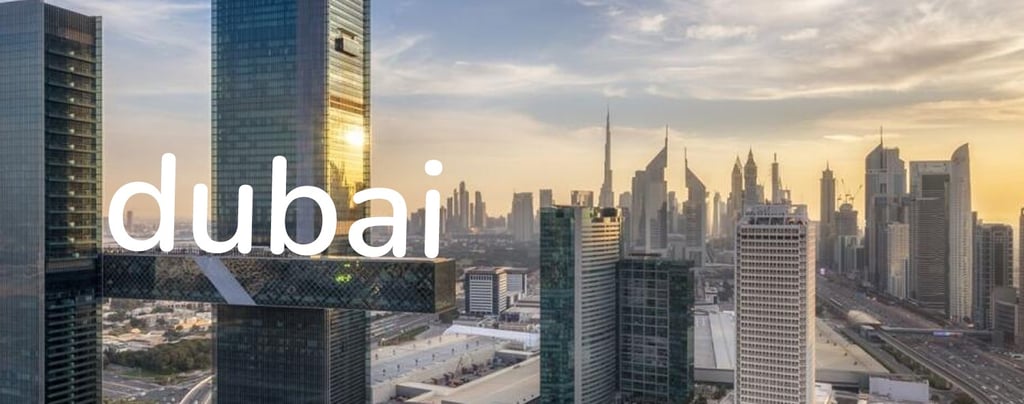

Dubai's Media Landscape
Dubai houses a vibrant media sector with a blend of international and local news agencies, television channels, and print media outlets. Reuters, APTN, Bloomberg L.P., and the Middle East Broadcasting Centre (MBC) are among the global players situated in Dubai Media City and Dubai Internet City. Local TV channels like Dubai One and Dubai TV cater to audiences with programming in English and Arabic, respectively.
The city is also home to prominent newspapers such as Dar Al Khaleej, Al Bayan, Al Ittihad (in Arabic), and Gulf News, Khaleej Times, Khaleej Mag, and 7days (in English), ensuring a diverse media landscape.
In telecommunications, Etisalat previously monopolized services until the emergence of competitors like Du in 2006. Internet services were introduced in 1995, with Dubai boasting substantial bandwidth and hosting DNS data centers.
Dubai's media regulations also encompass digital commerce laws, digital signatures, and data protection, shaping a dynamic yet regulated digital environment. The media landscape continues to evolve, showcasing the city's cultural richness and embracing digital platforms for diverse storytelling and promotion.
Sports Scene in Dubai
Football and cricket reign supreme as the most beloved sports in Dubai, with the city hosting notable events and teams across various disciplines. The International Cricket Council's headquarters are based in Dubai, underscoring the city's significance in cricketing circles. In football, Al Wasl FC, Shabab Al-Ahli Dubai FC, and Al Nasr SC proudly represent Dubai in the UAE Pro-League, with Al-Wasl holding a strong record of championships.
Dubai's sports calendar is dotted with prestigious tournaments like the Dubai Tennis Championships, The Legends Rock Dubai tennis events, Dubai Desert Classic golf tournament, and the DP World Tour Championship. These gatherings draw global sports luminaries, adding to the city's sporting allure.
The Meydan Racecourse hosts the esteemed Dubai World Cup, a thoroughbred horse racing spectacle attracting enthusiasts worldwide. Basketball enthusiasts root for Shabab Al Ahli Basket, while rugby fans relish the Dubai Sevens tournament, a part of the Sevens World Series. In 2009, Dubai hosted the Rugby World Cup Sevens, further solidifying its rugby credentials.
Auto racing enthusiasts flock to the Dubai Autodrome, which stages thrilling racing events year-round. The venue includes a cutting-edge indoor and outdoor Kartdrome, catering to both professional racers and leisure riders.
Dubai's sporting landscape extends beyond local leagues, as evidenced by hosting the Indian Premier League cricket tournament in 2020 amid the COVID-19 pandemic, showcasing the city's adaptability and passion for sports.
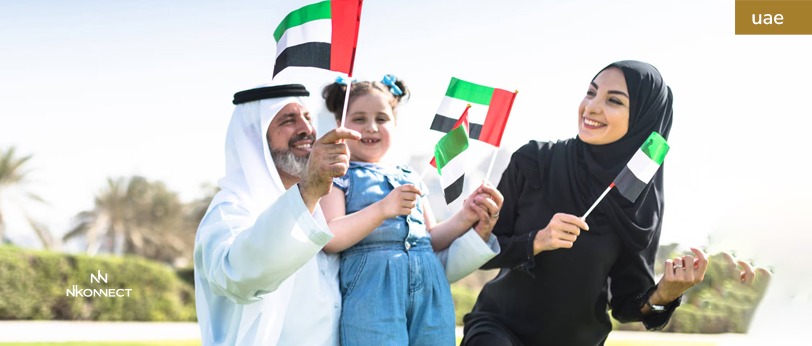

Dress Etiquette
Emirati attire reflects the traditional clothing styles prevalent in the Arabian Peninsula. Women often don the "abaya," a long black robe paired with a hijab that covers the head and neck, leaving only the face exposed. Some may opt for a niqab, which covers the mouth and nose, revealing only the eyes. For men, the "kandurah" or "dishdasha," a long white robe, is common, complemented by a headscarf known as a "ghotrah." The traditional ghutrah is white, secured in place by an "egal," resembling a black cord. Younger Emiratis often sport red and white ghutrah, styled like a turban around their head.
Educational Landscape
Dubai's education system aligns with that of the United Arab Emirates. As of 2009, the Ministry of Education oversees 79 public schools catering to Emiratis and expatriate Arab communities, alongside 207 private schools. Public schools primarily use Arabic as the medium of instruction with a focus on English as a secondary language. Conversely, most private schools conduct classes in English. Notably, the Swiss International Scientific School in Dubai offers bilingual streams in English/French or English/German.
International education is also prevalent, with 36 schools offering the International Baccalaureate Programmes for ages 3-19. Furthermore, 15 schools have introduced the IB Career-related Programme alongside vocational qualifications like BTECs.
The educational landscape features various curricula, with a significant presence of UK and Indian-based schools. While Dubai hosts more UK-curriculum schools, Indian-curriculum institutions have a larger student enrollment due to their size and affordability. Indian-curriculum schools typically offer CBSE, with a few offering ICSE.
British primary education is available in 18 schools, while 64 schools offer a UK-style secondary education. The American School of Dubai represents the American curriculum segment.
Dubai's education regulator, KHDA, plays a pivotal role in school quality enhancement through rigorous inspections and ratings. Currently, 17 schools hold an Outstanding rating, and 40 are rated Very Good, reflecting improved educational standards.
Notable universities in Dubai include the American University in Dubai, Hult International Business School, Al Ghurair University, and others offering a range of disciplines from Business Administration to Engineering. American University in Dubai is recognized in QS World University Rankings. Synergy University Dubai Campus is also noteworthy for its unique location outside traditional educational zones.
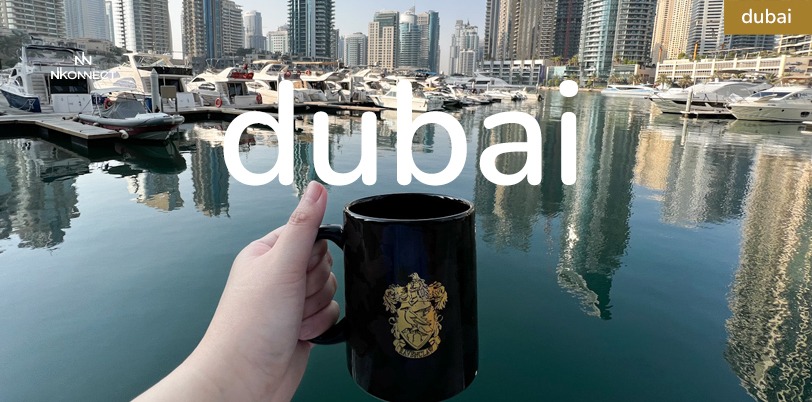

Healthcare in Dubai
Healthcare in Dubai operates within two distinct sectors: public and private. While each Emirate sets healthcare standards according to internal laws, these regulations generally align closely. Public healthcare facilities in Dubai date back to the late 1950s, expanding over time through public health initiatives. Currently, Dubai boasts 28 hospitals, comprising 6 public and 22 private institutions, with plans underway to construct 3 additional major hospitals by 2025.
As of 2012, Dubai houses a total of 1,348 medical clinics, primarily operated by private entities. The implementation of mandatory health insurance in 2015 has led to a surge in demand for medical services across the city.
Dubai Hospital, a public healthcare institution under the Dubai Department of Health and Medical Services, has been pivotal in the city's healthcare landscape. Though the decision to build the hospital was made in 1977, it commenced patient admissions in March 1983. The hospital is structured across 14 stories, with the lower floors dedicated to Accident & Emergency and outpatient services, while the upper levels house various wards.
Source : Wikipedia
Date : 04/05/2024


